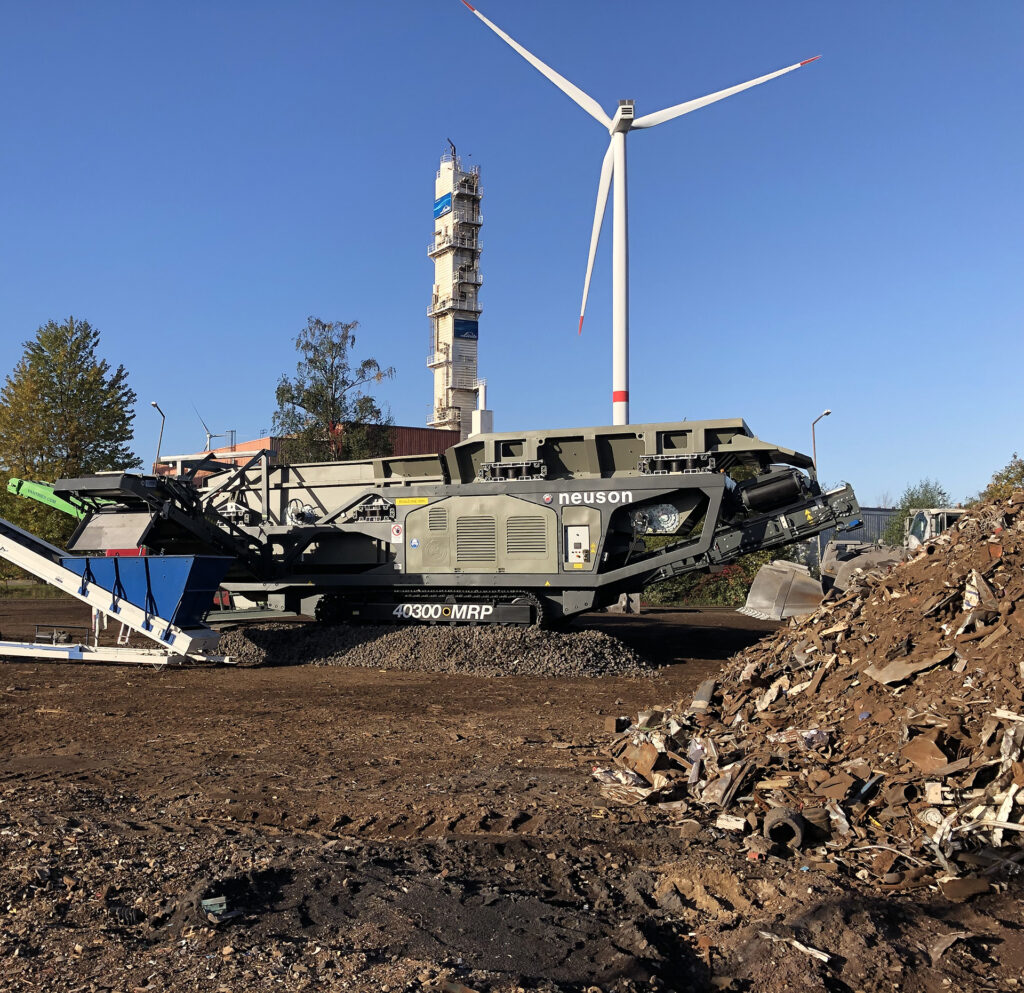Contact Carsten Holst
- 10000 T Scrap residues from ship cleaning, fractions: 0/10, 10/40, 40/80, 80/X .
Material is the rest of the ship that delivered scrap. Very difficult material, everything from sand to blow bars can be found in it.
The aim is to separate the remaining FE and to obtain different fractions for use in a mobile non-ferrous separator.
Task up to 85 T/h > with the previous technology we were at 35 T/h.
- 500 T of refractory material (excavated from the kiln) often includes pieces of wall. Kiln bricks, fractions: 0/45, 45/80, 80/X.
The aim is to separate the refractory bricks, which are then sold on.
Fractions 0/45 & 45/80 > Recycling in road construction.
Task of approx. 80 tons per hour > These stones were previously sorted out by hand, as a correspondingly heavy screening technique was not available. was available.
- 14000 tons of metallurgical debris (everything that is left over in a steelworks) steel plates, shavings, billets, wood, slag.
Fractions: 0/45, 45/80, 80/120, 120/X
The aim is to get the FE out and produce a 0/45 mineral mixture, everything over 45 mm is produced in other plants.
further processed. The FE is extracted from the 120/X fraction using a magnetic excavator.
Task of 50 – 130 T/hr depending on material properties, previously max. 50 T/hr.
- 8000 T EOS steel mill slag , raw material 0-ca.400.
Fractions: 0/45 (directly to customers as gravel base course), 45/80 & 80/120 goes to different crushing plants.
120/X is crushed with concrete tongs and made iron-free.
Task of 100-150 T/h.
So far, a total of 32500 tons have been processed with the system in approx. 400 hours, with only one set of screens in the upper deck!
As our material is anything but simple (individual pieces weighing approx. 800 kg sometimes occur), I find this remarkable.

